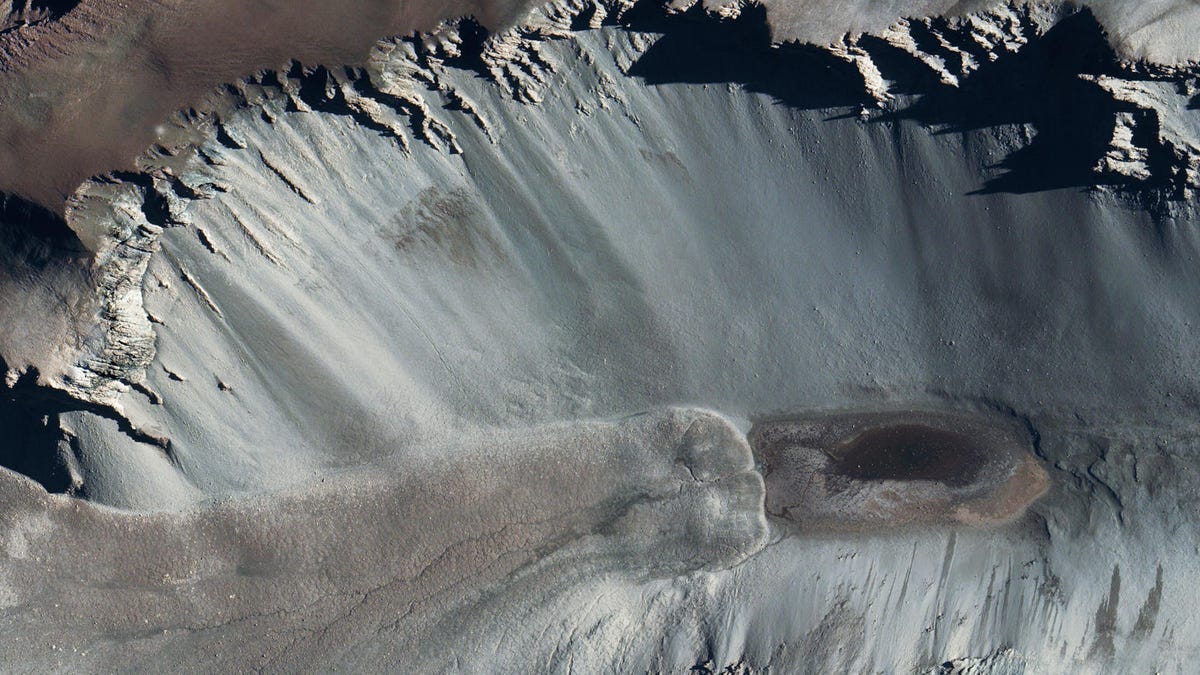NASA looks for Mars lessons in world's saltiest pond
The fascinating Don Juan Pond in Antarctica could teach us more about water on Mars, the space agency hopes.
The Don Juan Pond is unlike any you've ever seen. It's ankle deep and lives in a low valley in a brutally cold and dry area of Antarctica where it never rains (and only rarely snows). NASA describes it as "the world's saltiest body of water."
New NASA-funded research is mining the pond's fascinating secrets and could have implications for our understanding of water, and possible microbial life, on Mars.
Soil scientist Pierre Roudier snapped this photo of Don Juan Pond.
Despite winter temperatures that hit -58 Fahrenheit (-50 Celsius), Don Juan rarely freezes thanks to its salty nature, which significantly lowers its freezing temperature. The pond -- which is saltier than the Dead Sea or the Great Salt Lake in Utah -- is of particular interest to scientists because of the similarity of its environment to conditions on Mars.
A study led by University of Washington geochemist https://sites.google.com/uw.edu/toner2/home?authuser=0 and published this week found the calcium-chloride-rich pond is most likely fed by a deep groundwater source. Previous research published in 2013 suggested the pond is fed by moisture seeping down from near the surface around it. Toner's models of the pond show its chemical makeup can only be explained by a groundwater source.
Toner believes there could be an extensive aquifer hiding below the surface. "When thinking about the implications for a similar environment on Mars, that's much more exciting than just a localized surface phenomenon," he said in a statement.
The pond has yet to reveal all its mysteries. "After 60 years of extensive study, we still don't really know exactly where it's coming from, what drives the fact that it's visible on the surface, and how it's changing," Toner said.
His paper on the latest findings appears this week in the journal Earth and Planetary Science Letters with the title "The geochemistry of Don Juan Pond: Evidence for a deep groundwater flow system in Wright Valley, Antarctica."
In 2014, NASA noted astrobiologists are also intrigued by the pond and whether it might support microscopic life. This could also teach us about the possibility of finding microbial life on the Red Planet.
Toner and a team of scientists are set to investigate the pond and the source of its salt again this December.
Rebooting the Reef: CNET dives deep into how tech can help save Australia's Great Barrier Reef.
The Smartest Stuff: Innovators are thinking up new ways to make you, and the things around you, smarter.


